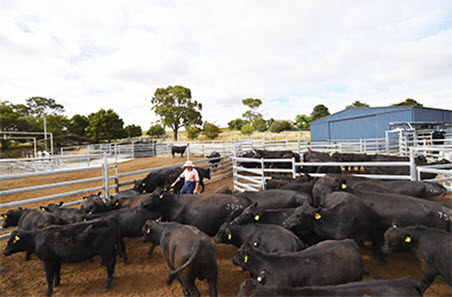Planning the road ahead
01 March 2019

If ever there was good advice during a dry spell, it’s ‘make a plan’.
Veterinarian, beef producer and farm consultant Dr Rod Manning urges producers to plan now for how they are going to navigate a highly possible, long, dry haul to autumn in southern Australia.
“If there’s no plan, people get stressed and simply run out of emotional capital,” he said.
“People who plan for what they will do from now until when we get significant rain, perhaps in late autumn, have a means to rationalise what they are doing. It takes most of the stress away.”
Rod said producers should take stock by asking questions such as:
- How much feed and water do I have on hand?
- How much capital do I have available?
- If it doesn’t rain until April/May, how will I get through until then?
- What’s the end goal?
Rod said in typical cow-calf operations, breeding stock are the core of the business, in particular, second, third and fourth calvers which are the most resilient.
Strategies to help preserve those breeders include:
- Early pregnancy testing to identify and sell non-productive females
- Sell surplus stock while prices hold (old cows, old bulls, young stock – all of which struggle during dry periods)
- Early weaning to preserve cow body condition and reproductive capacity
Rod said producers should work out their cows’ daily feed requirements and look at where they can source surplus feed if required.
“Consider trying to lock in a grain price, are you able to source feed privately and keep in mind that, during dry times, it is usually fibre that is under the greatest pressure and if you are feeding grain or pellets, cows need 20-30% of fibre in their diet to maintain rumen function,” he said.
Early weaning
Rod said autumn calving herds should be able to start weaning in the next month or when calves are at least three months old or 100kg.
“Milk is a very expensive energy utiliser and, for cows, early weaning is a big energy and body condition saver,” he said.
“The trigger for when to wean is cow body condition. A body condition score of high 2s or low 3s is where you need to be; any lower and cows will struggle to get through.”
While early weaning is a good strategy for preserving breeders’ reproductive capacity, Rod said producers should understand that young weaners need ongoing care with particular attention paid to nutrition.
“You can’t just yard wean them and throw them into the paddock and expect they will fend for themselves – that’s a recipe for disaster. The younger the calves, the more care they need,” he said.
Rod highly recommended producers seek professional nutritional advice, particularly when weaning calves under 100kg.
“There are pre-weaning strategies that will help alleviate calf stress at weaning,” he said.
“Feeding calves hay or silage while they are still on their mums imprints the concept of supplementary feeding, making the transition easier.
“Vaccinate for pink eye, Bovine Respiratory Disease, IBR (Infectious Bovine Rhinotracheitis Virus) and clostridial diseases (5 in 1).
“Pulpy kidney (covered by 5 in 1 vaccine) can be an issue in any high energy diet and, in selenium-responsive areas, a selenium injection may be beneficial.”
Rod recommended yard weaning for a week to 10 days, starting off with silage and then gradually introducing new feed (pellets or grain) and allowing several weeks for the rumen to adjust.
“The biggest hole in the process we see is the next 6-10 weeks post-weaning,” he said.
“Weaners must be on a good ration or pasture with enough protein and energy to grow.”
Pasture care
Rod urged producers to think about how they will optimise spring growth to build a feed wedge.
“Growing your own feed costs about 1/10th of buying it so think about strategic use of nitrogen and rotational grazing to lift your pasture base,” he said.
“Later in summer some producers may have to think about containment areas and ways of preventing land degradation.”
For more information Rod recommends reading Drought Feeding and Management of Beef Cattle from Ag Victoria.
More tools and resources are available at: www.mla.com.au/extension-training-and-tools/tools-calculators


